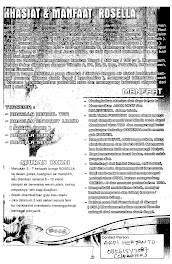
Release info:
CODEFull name: The Simpsons Game
Region: Europe
Languages: English
Release Group: BAHAMUT
Release Name: The_Simpsons_Game_ PAL_Wii-BAHAMUT
Filename: b-simpson
Dump Size: 89 x 50MB
download
CODEhttp://www.megaupload.com/?d=Y05ORZUB
http://www.megaupload.com/?d=HU8PJ1IZ
http://www.megaupload.com/?d=QSXV4EPJ
http://www.megaupload.com/?d=K4JRNB2G
http://www.megaupload.com/?d=FLY1XIYQ
http://www.megaupload.com/?d=LBBKN6NI
http://www.megaupload.com/?d=OLCA5HVY
http://www.megaupload.com/?d=UUH5RXCD
http://www.megaupload.com/?d=C090I7WE
http://www.megaupload.com/?d=5IH6KFBV
http://www.megaupload.com/?d=9CXBMY0S
http://www.megaupload.com/?d=TKLM2IMD
http://www.megaupload.com/?d=OYRIMO5Z
http://www.megaupload.com/?d=5P4HKW22
http://www.megaupload.com/?d=FI7GBDEG
http://www.megaupload.com/?d=JJ25FV7A
http://www.megaupload.com/?d=KHXR175F
http://www.megaupload.com/?d=KH51T5NK
http://www.megaupload.com/?d=HE55DN4Q
http://www.megaupload.com/?d=RQFLYWBW
http://www.megaupload.com/?d=78O23O9U
http://www.megaupload.com/?d=73NJN4DV
http://www.megaupload.com/?d=S4QA5QT2
http://www.megaupload.com/?d=PSYDI3A0
http://www.megaupload.com/?d=0AL3JOU1
http://www.megaupload.com/?d=W66NY4WJ
http://www.megaupload.com/?d=Z10GG6LV
http://www.megaupload.com/?d=3CRBXV1U
http://www.megaupload.com/?d=SI60XBMV
http://www.megaupload.com/?d=F9I897AZ
http://www.megaupload.com/?d=XQ47IXUF
http://www.megaupload.com/?d=1XE7YDHF
http://www.megaupload.com/?d=CAY5E7AS
http://www.megaupload.com/?d=O2XQVP3Q
http://www.megaupload.com/?d=MUCDM1SM
http://www.megaupload.com/?d=LWFK36WJ
http://www.megaupload.com/?d=B65THMLA
http://www.megaupload.com/?d=2MZR12W9
http://www.megaupload.com/?d=RIYIOC71
http://www.megaupload.com/?d=X5CEMSEJ
http://www.megaupload.com/?d=TLFDGZ8G
http://www.megaupload.com/?d=XZWOUJBL
http://www.megaupload.com/?d=ROTYJ9W0
http://www.megaupload.com/?d=BD9WXLRD
http://www.megaupload.com/?d=HV2H61Y1
http://www.megaupload.com/?d=Z15MLQBQ
http://www.megaupload.com/?d=BIEYP832
http://www.megaupload.com/?d=5KD4646K
http://www.megaupload.com/?d=14H977A4
http://www.megaupload.com/?d=BPG6KJHQ
http://www.megaupload.com/?d=1XVOJWYH
http://www.megaupload.com/?d=93DX6QVP
http://www.megaupload.com/?d=3XN8SBC3
http://www.megaupload.com/?d=TBO905S5
http://www.megaupload.com/?d=WM90G6K2
http://www.megaupload.com/?d=0IFJOI3E
http://www.megaupload.com/?d=8QVD8R9K
http://www.megaupload.com/?d=GGTM4A6M
http://www.megaupload.com/?d=6S4VRYJG
http://www.megaupload.com/?d=G4WQUNR3
http://www.megaupload.com/?d=CY54THK1
http://www.megaupload.com/?d=5T4ISO9F
http://www.megaupload.com/?d=W7VXSR2W
http://www.megaupload.com/?d=TUIL74M0
http://www.megaupload.com/?d=IO68DXQX
http://www.megaupload.com/?d=E8U8A3YB
http://www.megaupload.com/?d=C3GHOZCD
http://www.megaupload.com/?d=198XYACD
http://www.megaupload.com/?d=UHQZRG8B
http://www.megaupload.com/?d=6SGKIR3K
http://www.megaupload.com/?d=RNHU2KJJ
http://www.megaupload.com/?d=D6UHBF5F
http://www.megaupload.com/?d=QJXY4F0X
http://www.megaupload.com/?d=RYTVKE1S
http://www.megaupload.com/?d=QGI2ZZWM
http://www.megaupload.com/?d=JZQSV4D0
http://www.megaupload.com/?d=GNJAORK5
http://www.megaupload.com/?d=RFL22UQZ
http://www.megaupload.com/?d=5S84RPCJ
http://www.megaupload.com/?d=GF2QK1UE
http://www.megaupload.com/?d=XE2JBCCO
http://www.megaupload.com/?d=WWBBAH8E
http://www.megaupload.com/?d=631RNF0C
http://www.megaupload.com/?d=1F3Z2W5M
http://www.megaupload.com/?d=EYA6WA4C
http://www.megaupload.com/?d=TDJ1GW89
http://www.megaupload.com/?d=VGHKL3MB
http://www.megaupload.com/?d=6N44GVD9
http://www.megaupload.com/?d=UK9EK0M0
http://www.megaupload.com/?d=4I6RYZ9B
http://www.megaupload.com/?d=JPSDTAGF
http://www.megaupload.com/?d=MP51507V
